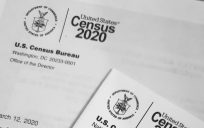The Plain Writing Act of 2010 and Executive Order 13563 both require that we communicate clearly, accessibly, consistently so that government information is easy to understand.
The principles of plain language help us provide universal access to government information, for many people. We’re told to “write for average comprehension,” when we use those principles. So, when we’re communicating on behalf of our agencies, we should consider if our content causes barriers for people in these audiences:
1. Low-literacy skills or low-language proficiency
We commonly forget about people who have trouble reading or who don’t have a wide vocabulary. Most adults read on an 8th or 9th grade level, but much government content is written beyond that.
2. Intellectual or cognitive impairments
Cognitive impairment is when a person has trouble concentrating, learning, remembering, or making decisions that affect their life. Intellectual disability means a person has limits in intellectual functions and behaviors, such as communications or interpersonal skills. Both disabilities can range from mild to severe.
3. Autism or Asperger syndrome
Autism or autism spectrum disorder (ASD) is a general term for disorders of brain development. They are marked by difficulty in social skills, interactions, and communication; and repetitive patterns of behavior.
4. Dyslexia
The simplest definition of dyslexia is it’s a learning difficulty that makes it hard for some people to learn to read, spell, and write. Research shows that providing content in audio, visual (diagrams and color marking), etc. all help people with dyslexia to learn and comprehend easier.
5. Deaf or hard-of-hearing
The terms deaf and hard-of-hearing describes people who don’t hear well enough to rely on their hearing to process speech and language. People with mild to moderate hearing loss can be “hard-of-hearing” but aren’t deaf.
6. Aging
According to the W3C-WAI, the number of older digital media users is increasing. People in this group may experience a decline in memory or thought process, difficulty concentrating, being easily distracted, etc. They also may be unfamiliar with slang.
For all audiences, use these tips to engage your users and help them to understand your messages:
- Use bullets so readers easily scan your key messages and points.
- Use one or two-syllable words.
- Trim excess words, and use short sentences.
- Use everyday, common terms instead of jargon or complex words.
- Write in complete sentences, and avoid omitting the noun for a casual tone.
- Use words instead of symbols, or a combination, whenever possible.
- Avoid irony, slang, and region-specific terms.
- Minimize the use of hyphens.
- Justify text to the left with a ragged right edge, instead of full justification.
- Illustrate points with pictures or simple charts and diagrams.
Our goal is to have a conversation with our users, meet their needs, and find important information. Plain language and thoughtful consideration of your audience will help you reach more people than ever.
How have you used plain language to interact with your users? Share your thoughts!
Angela Hooker is part of the GovLoop Featured Blogger program, where we feature blog posts by government voices from all across the country (and world!). To see more Featured Blogger posts, click here.





This is an excellent primer on the use of plain language–something we all need to keep in mind in our writing! Thanks, Angela.
Thanks very much, Amber! I’m glad that it’s a helpful primer and reminder.